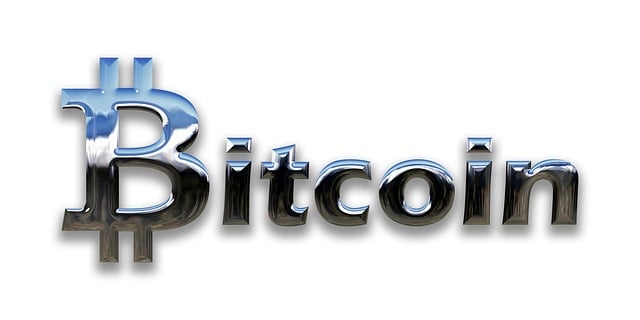Bitcoin investors face a key choice between long-term "buy and hold" strategy, emphasizing patience and capital appreciation, and active trading for immediate gains in a volatile market. Long-term holders believe in Bitcoin's value as a store of value akin to gold, while active traders seek profits through frequent trades based on market trends. The former method offers stability, reduced costs, and potential exponential growth, while the latter provides short-term gains but higher risks from volatility, fees, and emotional strain. Choosing between them depends on investment goals, risk tolerance, and understanding of Bitcoin's dynamics.
In the dynamic world of cryptocurrency, understanding investment strategies is paramount, especially for Bitcoin, a digital asset with immense potential. This article delves into two prominent approaches: long-term holding and active trading. We explore the benefits of the buy-and-hold strategy, where patience is key, and analyze the risks and rewards of short-term active trading in Bitcoin’s volatile market. By examining market influences and real-world examples, investors can make informed choices tailored to their risk tolerance and goals.
- Understanding Long-Term Holding: The Bitcoin Buy and Hold Strategy
- Exploring Active Trading: Short-Term Gains in the Volatile Market
- Pros and Cons of Each Approach: A Comprehensive Analysis
- Market Factors Influencing Investment Decisions
- Real-World Examples: Success Stories and Lessons Learned
- Making an Informed Choice: Tips for Bitcoin Investors
Understanding Long-Term Holding: The Bitcoin Buy and Hold Strategy

Bitcoin investors often find themselves torn between two distinct strategies: long-term holding and active trading. Understanding Long-Term Holding, or the “buy and hold” approach, is a crucial step in this decision. This strategy involves purchasing Bitcoin with the intention of keeping it for an extended period, regardless of short-term price fluctuations. Adherents believe that Bitcoin’s inherent value will appreciate over time, making it a solid long-term investment. By resisting the urge to sell during market dips, investors allow their holdings to grow alongside Bitcoin’s potential as a decentralized digital currency with increasing global adoption.
This method requires patience and a deep belief in Bitcoin’s future prospects. It’s not about trying to time the market or capitalize on quick gains; instead, it focuses on securing an asset that supporters claim has the potential to revolutionize finance. The “buy and hold” strategy is appealing for those who view Bitcoin as a store of value akin to gold, expecting its price to rise steadily over the years.
Exploring Active Trading: Short-Term Gains in the Volatile Market

In the dynamic world of Bitcoin, active trading presents a tantalizing opportunity for investors seeking short-term gains in a notoriously volatile market. This strategy involves frequent buying and selling, capitalizing on rapid price fluctuations to rack up profits. Proponents argue that the high liquidity and 24/7 nature of cryptocurrency exchanges allow for agile trading decisions, enabling traders to capitalize on fleeting moments of upward or downward momentum.
However, active trading is not without its challenges. It demands constant vigilance, quick decision-making skills, and a deep understanding of Bitcoin’s unpredictable behavior. The risks are substantial, with the potential for significant gains quickly turning into steep losses, especially during periods of extreme volatility. Yet, for those who embrace the thrill of navigating this labyrinthine market, active trading offers a tantalizing path to maximize returns in the short term.
Pros and Cons of Each Approach: A Comprehensive Analysis

Long-Term Holding vs. Active Trading: Pros and Cons
Long-Term Holding: The strategy involves purchasing Bitcoin and holding it for an extended period, with the primary goal being capital appreciation. Proponents argue that Bitcoin’s limited supply makes it a store of value akin to gold. Advantages include reduced transaction costs, mental peace from not having to constantly monitor markets, and potential gains from network effects as Bitcoin adoption increases. However, it may also mean missing out on short-term price swings and profit opportunities. Moreover, the long time horizon can be challenging for those who require liquidity or are averse to market volatility.
Active Trading: This approach focuses on frequent buying and selling of Bitcoin based on market trends, news, and technical analysis. Active traders aim to capitalize on short-term price movements for quick profits. Benefits include the potential for higher returns through timely trades and the ability to adapt strategies swiftly. However, it also comes with significant risks. Trading frequently can lead to increased transaction fees, emotional stress from constant monitoring, and the possibility of losses if market predictions are incorrect. Additionally, keeping up with Bitcoin news and technical indicators requires substantial time and knowledge.
Market Factors Influencing Investment Decisions

Bitcoin investors often find themselves at a crossroads, choosing between holding their crypto assets for the long term or engaging in active trading. Market dynamics play a pivotal role in shaping this decision. Factors like volatility and market sentiment can significantly impact both strategies. Bitcoin’s notorious price swings might allure short-term traders seeking quick gains, but they can also be a double-edged sword, causing substantial losses if not managed correctly.
On the other hand, long-term investors view bitcoin as a store of value, similar to traditional commodities. They focus on fundamental factors such as increasing institutional adoption, growing mainstream acceptance, and underlying technology advancements. These investors believe that despite market fluctuations, bitcoin’s inherent properties and potential will drive its price higher over extended periods.
Real-World Examples: Success Stories and Lessons Learned

In the dynamic world of Bitcoin investment, real-world examples offer valuable insights into the enduring appeal of long-term holding versus active trading. Consider the story of Alex, who, in 2013, invested a modest sum in Bitcoin when it was still relatively unknown. By adopting a buy-and-hold strategy, he weathered the market’s volatility and watched his investment grow exponentially over the years. This success highlights the power of patience and long-term vision in the crypto space.
On the other hand, active traders like Sara sought to time the market, frequently buying and selling Bitcoin based on short-term price fluctuations. While she experienced bursts of success, her constant trades led to significant fees and missed out on the steady gains of a hold strategy. Sara’s journey serves as a lesson in understanding that Bitcoin’s intrinsic value, rather than speculative trading, is often the key to achieving substantial returns over time.
Making an Informed Choice: Tips for Bitcoin Investors

Making an informed choice between long-term holding and active trading is crucial for Bitcoin investors. To decide which strategy aligns best with your goals, consider your investment horizon and risk tolerance. If you’re seeking stability and long-term growth, holding Bitcoin for an extended period may be the way to go. This approach allows you to ride out market fluctuations and potentially reap significant gains over time.
On the other hand, active trading offers more opportunities for short-term profit-making by buying and selling Bitcoin based on market trends and news. However, it comes with higher risks and requires extensive market analysis and quick decision-making skills. Investors who opt for this strategy need to stay updated on Bitcoin’s performance across various exchanges and be prepared to adapt to volatile price changes.
In the dynamic world of cryptocurrency, the age-old debate between long-term holding and active trading persists. This article has explored both strategies, revealing that while short-term gains are tantalizing, especially in Bitcoin’s volatile market, holding for the long haul offers a more stable path to wealth accumulation. Ultimately, the best approach depends on individual risk tolerance, investment goals, and market insights. By weighing the pros and cons of each method and staying informed about market trends, Bitcoin investors can make decisions that align with their unique circumstances, ensuring they navigate this digital asset class with confidence and potentially reap its significant rewards over time.





Leave a Reply